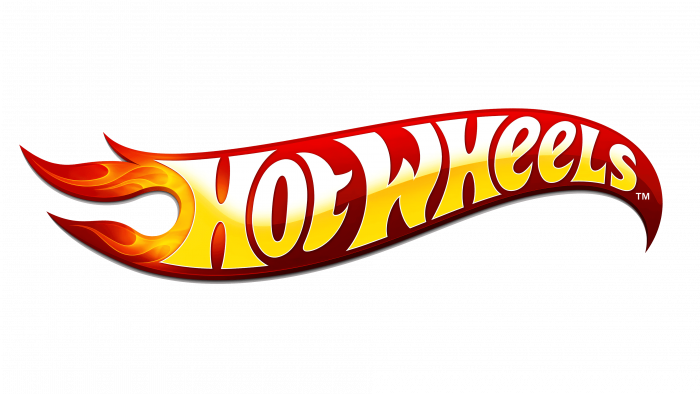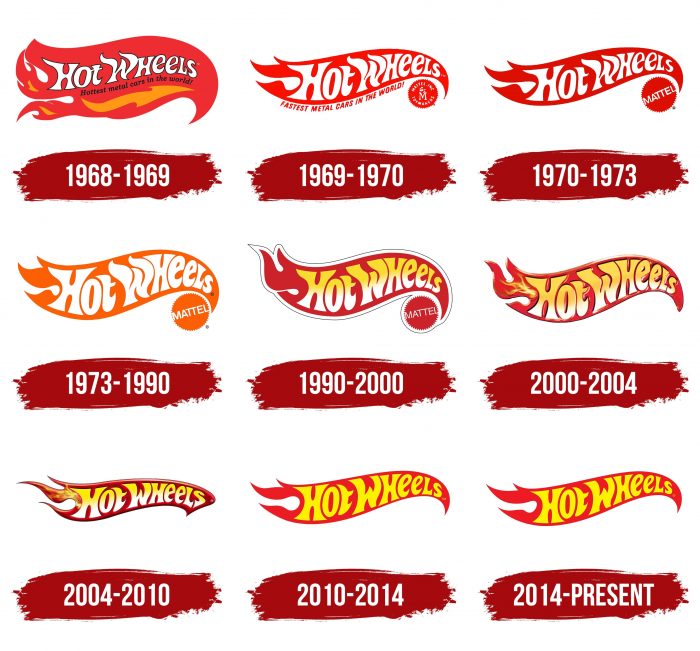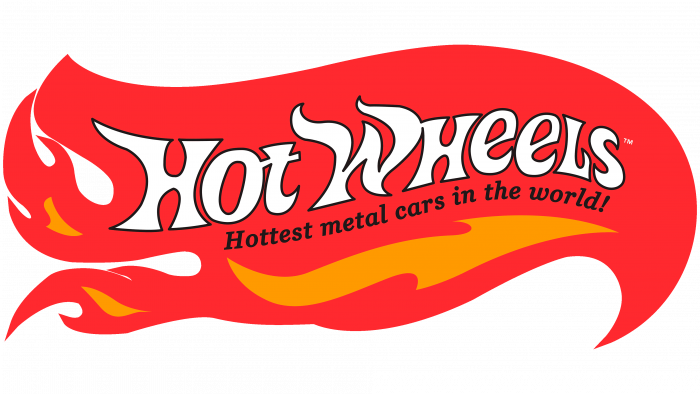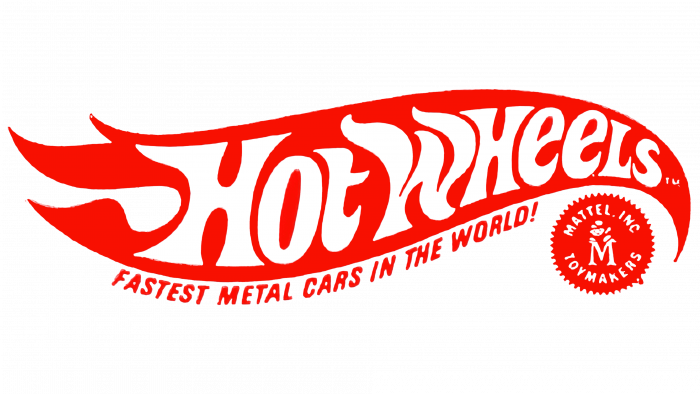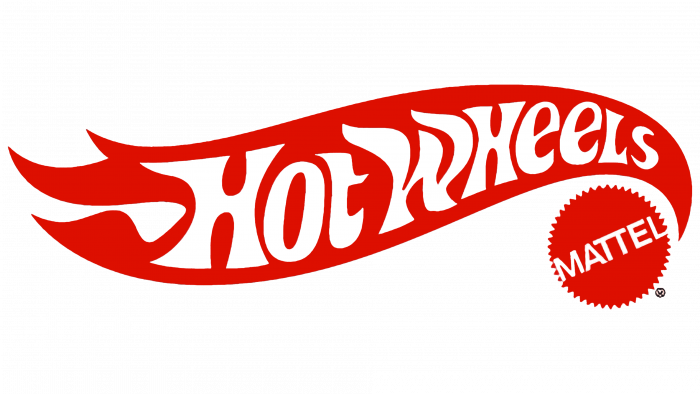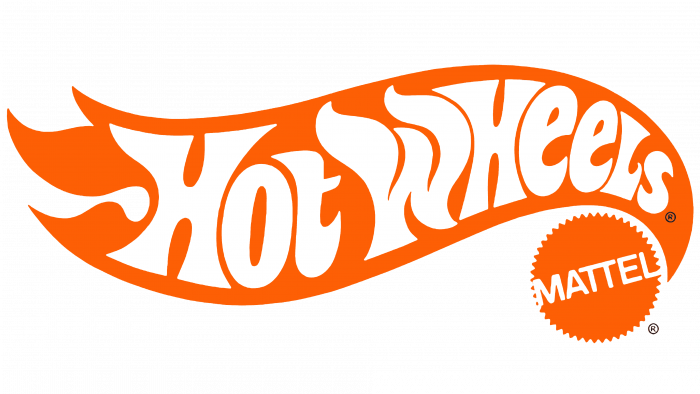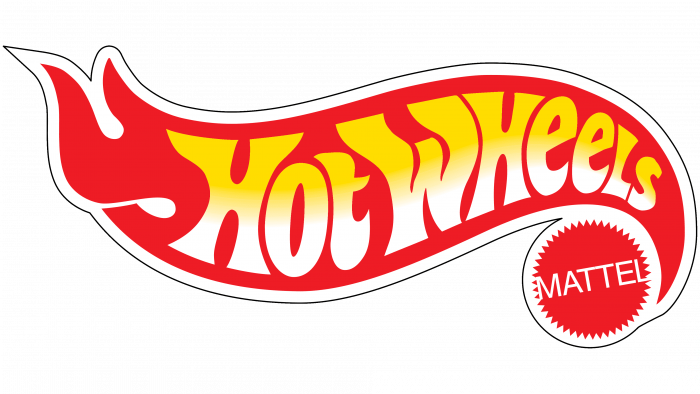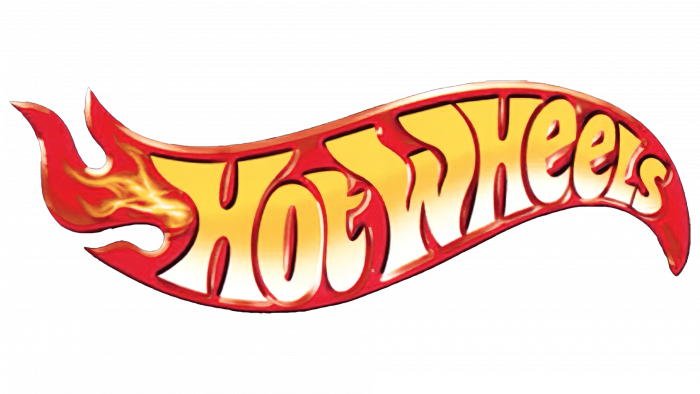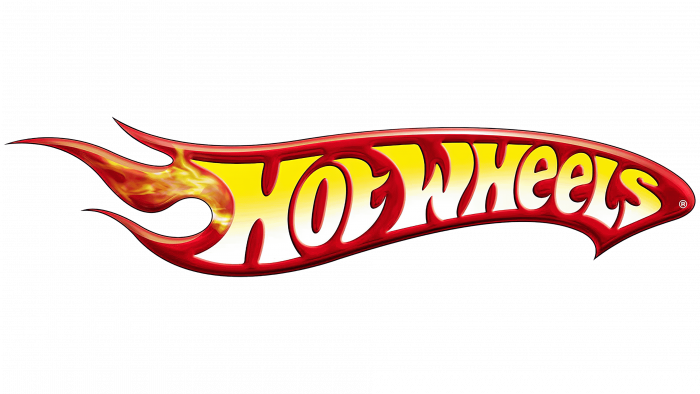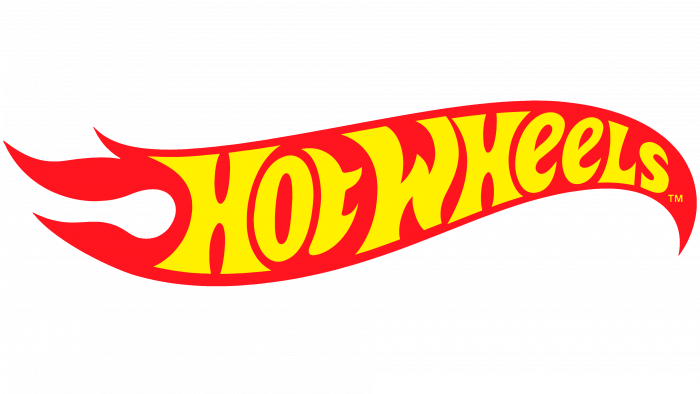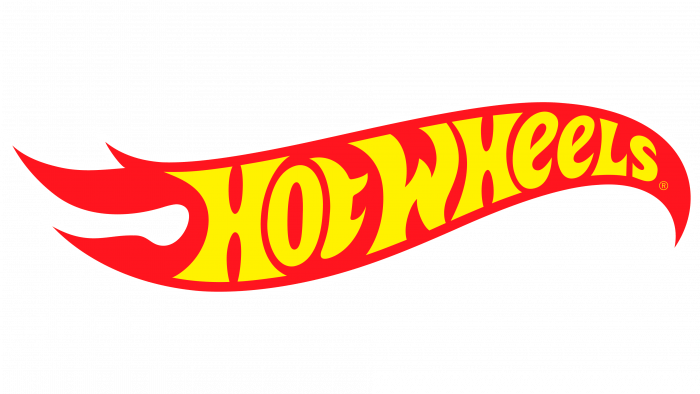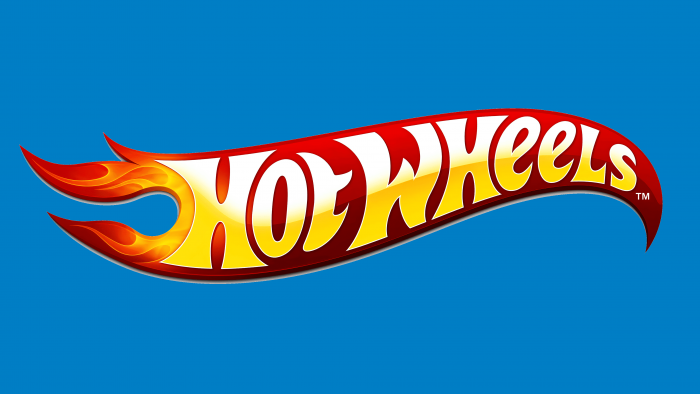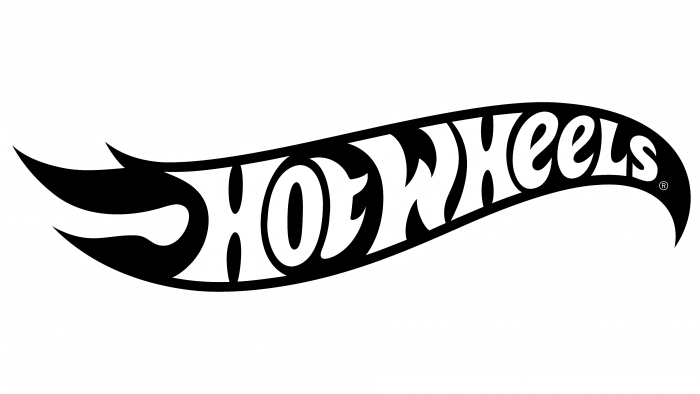The fiery Hot Wheels logo encodes high-speed racing and overcoming obstacles. Cars rush along curved tracks, leaving only a ghostly trail behind them. The emblem conveys the feeling of flight and the riders’ hot emotions.
Hot Wheels: Brand overview
Meaning and History
Many generations of Americans have grown up on Hot Wheels cars. The first toys appeared in 1968 when the inventor of the Elliot Handler decided to please his son with new car figures. He noticed his child’s passion for playing with Matchbox cars and decided this was a great base for business. True, neither his wife nor Mattel supported the voiced idea. However, this did not stop Elliot, and he enthusiastically took up the development of models such as the hot rod with the help of John W. Ryan.
Now, Hot Wheels is not just a toy but the dream of many collectors. Hard-to-find and rare examples such as the Beach Bomb Bus ($150,000), the purple Olds 442 muscle car ($12,000), and the brown ’31 Ford Woody sedan ($8,000) are particularly prized. These are representatives of the elite segment—the best of the best—no longer sold anywhere. Modern models based on real and fictional cars (for example, video games) are available in stores.
However, one common element unites old vintage cars for thousands of dollars and new low-price toys. This is the iconic logo created by Otto Kuhni in the late 1960s. It changed several times but always remained within the same concept. Kuhni worked for Mattel Corporation and was appointed packaging designer for Hot Wheels when the first car models appeared. Millions remember the emblem he invented for children because it is simple, stylish, bright, and dynamic.
The company recognized the merits of its irreplaceable employee because it was Kuhni who promoted the brand and laid the foundation for the old-school style. The unique Custom Otto car, released on the Hot Wheels anniversary and covered with Swarovski diamonds on all sides, was named after him.
What is Hot Wheels?
Hot Wheels is an American brand that presents miniature replica cars. The toys are produced in size 1:64. The trademark originated in 1968 and belonged to the Mattel company.
1968 – 1969
Mattel wanted to compete with Matchbox and founded the Hot Wheels brand of die-cast toy cars. Elliot Handler is considered the “father” of the project because he promoted the original business idea and developed it himself without finding support from his inner circle. The first series of sixteen cars came out in 1968. The boxes were decorated with an emblem depicting a long line of fire. Otto Kuhni made the flame-red but added orange splashes to make the drawing more realistic. Inside was the brand name, written in white letters of a non-standard shape, and the advertising slogan “HOTTEST METAL CARS IN THE WORLD!” black.
1969 – 1970
The debut lineup was so successful that Matchbox had to re-conceptualize it to match up with Hot Wheels. The next series of toys also made a splash. It aimed to update the lineup, so the designers needed to change the logo to emphasize this.
The classic structure of the badge has been preserved, but the fire stripe has become completely red and reduced in size. It looked like an uneven curving ribbon. The white inscription “HOT WHEELS” occupied the entire interior space,” and under the bottom, the new brand slogan was written in small print: “FASTEST METAL CARS IN THE WORLD!” red color.
On the right side, just below the lowered corner of the flame, was the Mattel Corporation logo. It was a jagged circle containing a large “M,” a picture of a cheerful little boy, the name of the company, and the word “TOYMAKERS.”
1970 – 1973
In 1970, the manufacturer devised a new advertising slogan, “Go With the Winner,” but decided not to include it in the logo. The old motto has disappeared, making the symbol more minimalistic. In addition, the designers have removed all elements from the red circle and replaced them with the diagonal inscription “MATTEL.” The shape of the flame has changed slightly, and the color has become darker.
1973 – 1990
In the early 1970s, the company began inking toys onto toys using pad printing. Thanks to the vast palette of colors, this technology allows the new orange logo to be very vibrant. The structure of the corporate badge has not changed, but the designers have increased the flame and the inscription inside it. The modified version was relevant until 1990. During this time, Hot Wheels released cars with reflective stickers and toys that change color when the temperature changes.
1990 – 2000
The 1990 emblem has become a landmark. First, it has a white outline with a black border around the edge, which was not observed before. Second, the company’s name was painted not in one but two colors for the first time. The combination of a yellow top and white bottom gave the letters dynamics.
In 1994, the manufacturer began to decorate all toy cars with a logo. In doing so, he experimented with colors and used the pad printing method. However, on some models, the badge was molded onto the glass (Corvette 97).
2000 – 2004
Entering the new millennium, the Hot Wheels brand ditched the round Mattel symbol and introduced an emblem with only an aflame and an inscription. However, this was not considered oversimplification because the design became three-dimensional with shadows and gradients. In addition, on the right side, right in front of the letter “H,” a small orange light appeared, similar to a current discharge.
2004 – 2010
The designers straightened the logo but made it thinner and added a white line. The shape of the letters also changed since the inscription had to occupy the space within the strip. The red has taken on a burgundy hue, and the top of the words “HOT WHEELS” has been dyed lemon yellow. The light next to the “H” now looks much more realistic.
2010 – 2014
In 2010, a retro-styled 2D logo was introduced. It resembled the 1969 version without the round Mattel symbol and advertising slogan. The writing was yellow.
2014 – today
The brand now adheres to the classic design because its new name resembles the previous one. The shape of the flame has changed insignificantly, and the letters have become slightly smaller.
Hot Wheels: Interesting Facts
Hot Wheels, made by Mattel since 1968, is a top toy brand loved by kids and collectors worldwide. These die-cast cars and unique tracks stand out for their cool designs and play value.
- Start: The brand started with 16 cars, including favorites like the Custom Camaro. These first cars, known as the “Original Sweet Sixteen,” are now collector’s items.
- Tracks: Hot Wheels came with orange tracks that let you create various race courses with loops and jumps, sparking creativity.
- Paint: The cars’ “Spectraflame” paint made them shiny and metallic, setting them apart. This quality paint and the decals are trademarks of Hot Wheels.
- Records: Hot Wheels has set real-world records, like the biggest loop in a car at the X Games 2012.
- Themes and Collabs: Hot Wheels is themed after movies, TV shows, and partnerships with brands like Star Wars and Marvel, which collectors love.
- Collectors: Hot Wheels – collected by kids and adults alike. Rare models and those in perfect condition can be quite valuable.
- Production: With over six billion cars made, Hot Wheels claims to be the world’s best-selling toy, launching new models regularly.
- Digital Play: Hot Wheels has moved into the digital age with video games, apps, and augmented reality, offering fun ways to play online and offline.
- Legends Tour: This annual event lets car fans compete to have their custom designs turned into a real Hot Wheels car.
- World Records: Hot Wheels has broken records, like the longest track, over a mile long, set up in Russia in 2019.
Hot Wheels continues to be a favorite, blending creative play with collectability and a love for cars across all ages.
Font and Colors
Otto Kuhni depicted in the emblem a dynamic stream of fire, which, in his view, should burst out from under hot car tires. This personifies prohibitive speed and sports excitement because Hot Wheels toy cars were conceived as mini-versions of real models.
The letters look like they are small wriggling tongues of flame. Although it is more of an individual style, the font is reminiscent of Heavy Heap from Typodermic Fonts. The colors correspond to the logo’s shape: red and yellow can be called quite “fiery.”
FAQ
What is the rarest Hot Wheels color?
The 1974 Blue Rodger Dodger is one of the rarest Hot Wheels cars ever. This model’s blue color is unique, with only seven units produced, making it highly collectible.
The company has created many color variations for its die-cast cars. Some colors are common, while others are rare. The rarity of the Blue Rodger Dodger increases its value, as collectors are willing to pay more for such limited editions.
What does the Hot Wheels symbol mean?
The logo features a flame motif representing fire, wheels, and speed, reflecting the brand’s key attributes. The fire symbolizes speed and intensity. It represents the energetic nature of cars and evokes the excitement of racing and automotive performance. The wheel in the logo is directly related to the brand’s core product, die-cast toy cars.
The logo’s colors, mainly red and yellow, add to its symbolism. Red is associated with speed, energy, and passion, reflecting the excitement of racing. Yellow gives the logo a bright and cheerful look that appeals to children and collectors, emphasizing the joy and creativity of the game.
The logo typography uses a custom sans serif font, which gives the brand a modern and elegant look. This font choice enhances readability and adds a contemporary touch, harmonizing with modern vehicle designs.
Who made the Hot Wheels logo?
Otto Kuhni’s logo is known worldwide. Mattel’s packaging designer, Kuhni, created a logo that captures the brand’s essence: speed, excitement, and fun. His design was dynamic and stylish, appealing to children and collectors. He used fiery stripes and bold colors to embody the thrill and rushing energy of the cars. This logo stood out on store shelves and symbolized the excitement of miniature car racing.
In recognition of Kuhni’s contributions, Mattel released a special edition car called the Custom Otto. This car was decorated with Swarovski crystals, adding luxury and exclusivity.
When did Hot Wheels change their logo?
The logo was last updated in 2014. The change was minor, focusing on the size rather than a complete redesign. The new logo is slightly smaller but retains all the iconic core elements of the brand. The brand has kept the original colors, shape, and style. Updates like these help maintain relevance in a changing market while preserving a loyal customer base.
What is the Hot Wheels saying?
The parent company developed clear slogans to promote toy cars, reflecting the brand’s essence and excitement. The first slogan, “Ride with the Winner,” conveyed the competitive spirit of racing and performance.
The current slogan, “It’s not the same without the flame,” shows the brand’s personality and the iconic flame logo. This tagline enhances the visual element of flames and suggests that the joy and excitement of the cars are unparalleled, making the experience unforgettable.
Who makes Hot Wheels?
Mattel has produced this famous brand of toy cars since 1968. The idea came to Elliot Handler, one of the founders of Mattel. Along with his wife Ruth, who created Barbie, Elliot wanted toy cars that were more exciting and worked better than any other.
They aimed to create highly detailed die-cast cars that focused on speed, performance, and the ability to perform stunts such as track racing and jumping. Elliot Handler’s vision of combining creative design with functional play has made Hot Wheels a favorite brand among children and collectors. Mattel continues to grow and expand its toy line, introducing new designs and technologies to enhance the appeal and performance of its vehicles.
